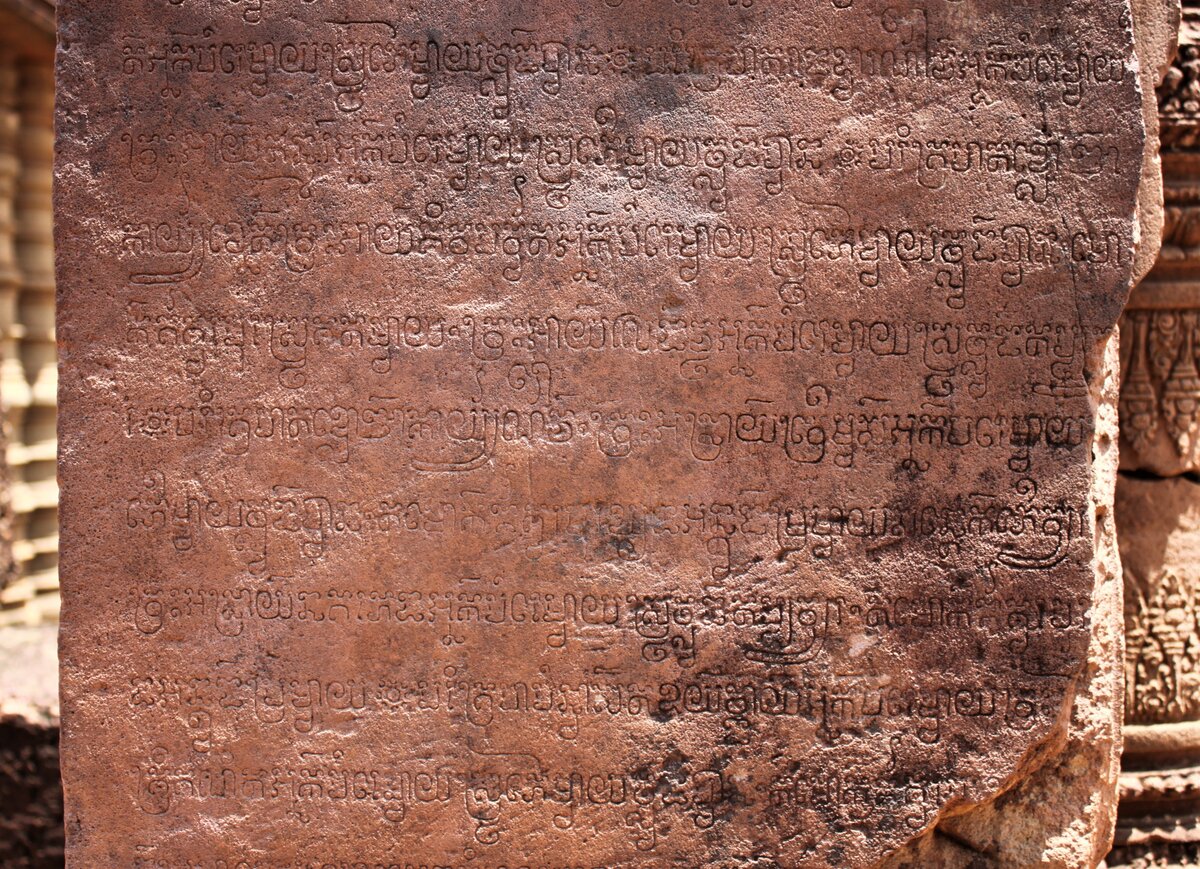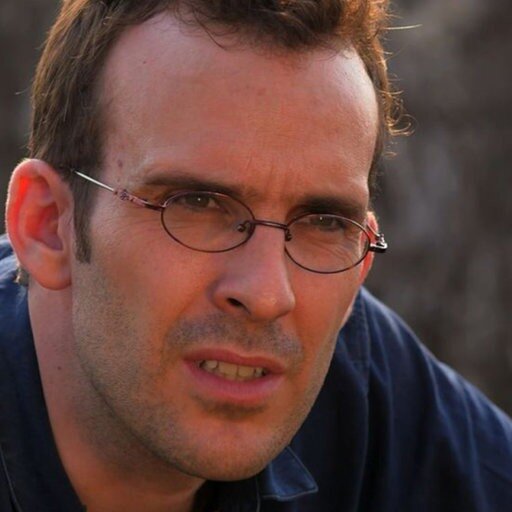Les curieuses inscriptions du Cambodge (Curious Cambodian Inscriptions)
by Éric Bourdonneau
What make the ancient inscriptions of Cambodia so particular.

- Publication
- OpenEdition Publications | INALCO | in ENCYCLOPÉDIE DES HISTORIOGRAPHIES : AFRIQUES, AMÉRIQUES, ASIES | Nathalie Kouamé, Éric P. Meyer, Anne Viguier
- Published
- 2020
- Author
- Éric Bourdonneau
- Pages
- 15
- Language
- French
Nearly 1,500 inscriptions, mostly lapidary, dated between the fifth century and the fifteenth century, make up the epigraphic corpus of ancient Cambodia. In 1966, George Coedès had listed 1005 of them, but many more have been discovered, and the work of Sanskritists, Khmerologists, linguists and historians bring new lights on this corpus.
From the presentation of the paper:
The corpus has a real unity — the vast majority of the inscriptions are inside the temples which allows the patrons’ pious works to be read — but every inscription, or nearly every inscription, invents its own form. Even within the inscriptions, the quite regular habit of combining Sanskrit and Khmer is emblematic of their “hybrid” character, which is often very pronounced – stanzas of invocation and devotion, philosophical speculations, authentic pieces of literature, royal charters, all of these are found there as well as very factual presentations and long lists of goods and servants. However, far from a juxtaposition that might seem artificial, it is the sometimes subtle articulation of the different sections of the inscriptions that attracts attention as it gives them an overall coherence.
The study also presents a novel approach to the “Indianization” of Ancient Cambodia, a concept dissected by contemporary researchers:
The practices and representations borrowed from India offered the ancient Khmers, as well as other Southeast Asian societies, the elements of an “included otherness”: the mediation of a sacred or illustrious “third party” as a condition of possibility for political and social ties. Over the long term, the place given to models borrowed from India — the epigraphic use of Sanskrit being one example among many others — was, however, regularly redefined and readjusted over the centuries and according to the regions. The contrast with the coastal societies of Southeast Asia is enlightening. Earlier and more intensely open to offshore trade, they would never make such “exemplary” use of Sanskrit in their inscriptions. It is difficult to make an India that is too close, too concrete, a civilizational center that must be locally revived locally and “bettered.” Apparent fidelity to a model presupposes maintaining a certain distance. When, in the course of the second millennium, Cambodia will be caught up in the great movement of “coastalization” of the Asian world, when the merchants will become more pressing and when “foreigners”, more numerous and visible, will compete with the age-old figure of the “distant Brahmin from India”, the expression in Sanskrit, at the same time as the practice of lapidary inscriptions, will inevitably fade and the words of this “perfect and sacred” language will be even more deeply absorbed within Khmer itself. [ADB translation]
The author proposes a typology of the use of either Sanskrit or Khmer in the inscriptions that have been retrieved and studied so far.
Photo: Inscription in Old Khmer K.571, eastern gate of eastern pavilion, Banteay Srei temple (author’s photo).
Tags: epigraphy, Sanskrit, Old Khmer, Khmer inscriptions, Indian influences
About the Author

Éric Bourdonneau
Historian and archaeologist Eric Bourdonneau (1973, Le Mans, France) has been working with EFEO in Cambodia since 1997.
After defending his PhD thesis Indianisation et formation de l’État en Asie du Sud-Est: retour sur trente ans d’historiographie. Matériaux pour l’étude du Cambodge ancien in 2005 (Pantheon-Sorbonne Paris I, 542 p) — his previous universitary papers were Géographie politique du Cambodge préangkorien à travers l’épigraphie du “Fou-nan” au “Tchen-la (DEA Paris III, 1997, 89 p.) and Banteay Srei, architecture et iconographie (Master Paris III, 1995, 79 p) — , he joined officially EFEO in 2007 as researcher and professor, and lectured on Ancient Cambodian history at the Faculty of Archaeology, RUFA, in 2008 – 2009. Back in France in 2010, he joined the laboratory CASE (Center for Southeast Asia, EHESS), teaching at EHESS with Pierre-Yves Manguin on SEA history and archaeology in 2012 – 2013 and, from then, at INALCO-EHESS on textual history of Cambodia with Gregory Mikaélian, Michel Antelme et Joseph Thach.
A specialist of the Koh Ker site, he also studied in-depth Banteay Srei, as well as Funan and the Mekong delta history. His research focues on Ancient Cambodia agrarian and societal organizations, and the development and renewal of social elites in Southeast Asia. Thanks to his expertise on Koh Ker sculptures, Eric Bourdonneau also played from 2015 a majour role in the identification of looted artworks from a temple in the tenth-century Khmer capital Koh Ker , leading to the restitution to Cambodia of a series of looted sculptures from museums such as the Denver Art Museum, the Norton Simon Collection in Pasadena, California, or The Met.
Eric Bourdonneau is a member of the Executive Council of CASE (EHESS), and a contributor to the EFEO research project Espace Khmer Ancien (EKA) and Corpus des Inscriptions Khmères (CIK). In August 2024, he became the director of EFEO Siem Reap.
Publications
- “Redéfinir l’originalité de Banteay Srei, la relation entre iconographie et architecture”, Aséanie 3, 1999, pp. 27 – 65.
- “The Ancient Canal System of the Mekong Delta. Preliminary Report”, dans A. Karlström et A. Källén (éd.), Fishbones and Glittering Emblems. Southeast Asian Archaeology, Stockholm, Museum of Far Eastern Antiquities, 2002, pp 257 – 270.
- “Culturalisme et historiographie du Cambodge ancien. A propos de la hiérarchie des sources de l’histoire khmère”, Moussons 7, Marseille, 2003, IRSEA-LASEMA-CNRS-Université de Provence, pp 39 – 70.
- “Réhabiliter le Funan. Óc Eo ou la première Angkor”, Bulletin de l’École française d’Extrême-Orient n° 94, Paris, EFEO, 2007, p. 111 – 158.
- [TK] [with Pierre-Yves Manguin] “Avec Pelliot, “le long de l’abîme””, in Acte du colloque Paul Pelliot, de l’histoire à la légende, Collège de France, Paris, 2 – 3 Oct. 2008, 2009.
- “Henri Marchal et la splendeur préservée du temple de Banteay Srei”, in Catalogue de l’exposition Des archéologues à Angkor, photographies de l’Ecole française d’Extrême-Orient, Paris-Musée, 2010, p. 100 – 101.
- “Pour en finir avec la “cité hydraulique”? Note de lecture de l’ouvrage de Didier Pillot, Jardins et rizières du Cambodge. Les enjeux du développement agricole, 2007”, Bulletin de l’École française d’Extrême-Orient n° 97 – 98, 2010, pp 409 – 437.
- “La fondation du culte du Devarāja. Danse, sacrifice et royauté au Prasat Thom de Koh Ker”, Compte-rendu de l’Académie des Inscriptions et Belles-Lettres, vol. 155, n°3, 2011, p. 1343 – 1382.
- “Nouvelles recherches sur Koh Ker (Chok Gargyar). Jayavarman IV et la maîtrise des mondes”, Monuments et mémoires (Fondation Eugène Piot), Tome 90, 2011, p. 93 – 141.
- “Mort, royauté et lieu saint dans le Cambodge ancien. Mission archéologique à Koh Ker”, in L’Ecole française d’Extrême-Orient et le Cambodge. Un siècle d’histoire 1898 – 2010, Magellan & Cie, 2011, p. 84 – 92.
- “L’histoire du Cambodge ancien existe-t-elle ? Monuments et documents de “dix siècles inconnaissables””, Péninsule, n°65, 2012 – 2, 2012, p. 221 – 249.
- [TK] “Śiva, kapāla à la main. Dieux et déesses terribles à Koh Ker et dans le Cambodge ancien”, in Catalogue de l’exposition « Angkor-Naissance d’un mythe. Louis Delaporte et le Cambodge », Paris, Gallimard, 2013.
- “Koh Ker. Prasat Chen and its Sculpture”, World Heritage, n°68, p. 94 – 96, 2013.
- Mémoires du Cambodge, Paris, EFEO-Magellan et Cie, 2020, 66 р.
- [ed., with Nasir Abdoul-Carime, Grégory Mikaelian and Joseph Thach], Temporalités khmères de près, de loin, entre îles et péninsules, Berne, Peter Lang, 2021, 430 р.
